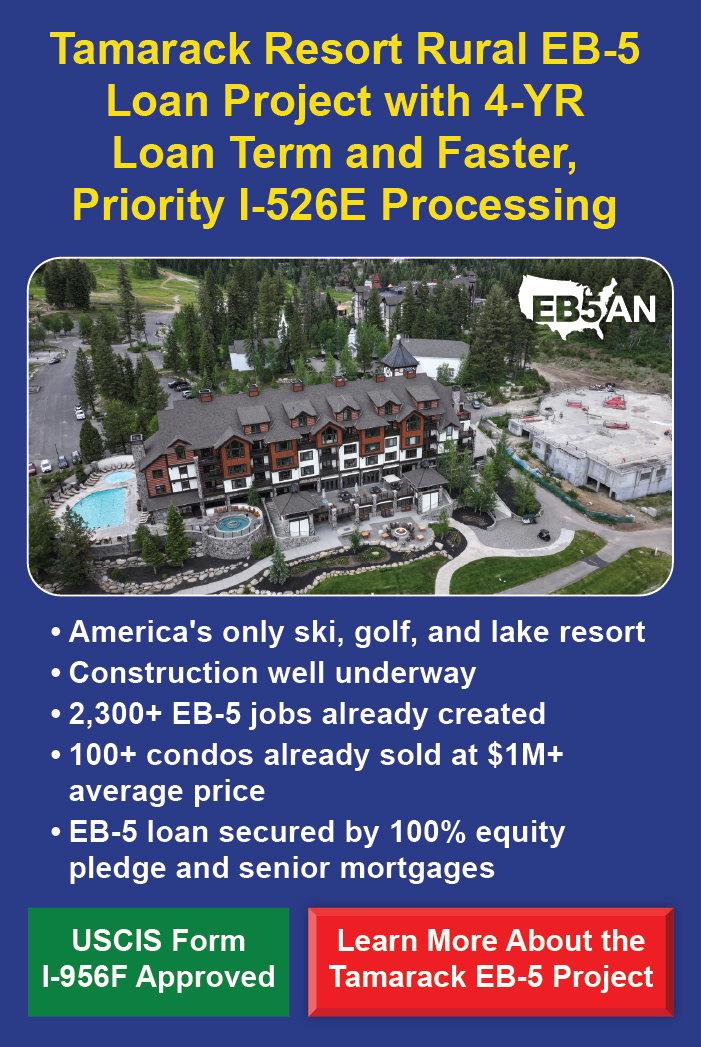
When you decide to start the EB-5 visa process, one of the first choices you’ll have to make is whether to invest the full amount right away or begin with a smaller amount and pay the rest later. This decision can have a significant impact on your path to getting a U.S. Green Card.
In this article, we’ll break down the key points to consider when choosing between a full or partial EB-5 investment.
The Basics of EB-5 Investments
- Full Investment vs. Partial Investment: What’s the Difference?
- How Partial EB-5 Investments Have Changed Over Time
The Advantages of Partial EB-5 Investments
Possible Problems to Keep in Mind
How to Make a Successful Partial Investment
Invest With EB5AN
The Basics of EB-5 Investments

Before discussing partial investments, let’s review the basics of EB-5. You start by selecting a project and agreeing to invest a specific amount. If the project is in a targeted employment area (TEA), the minimum investment is $800,000. Outside of TEAs, it’s $1.05 million. The money usually goes into an escrow account before being used for the project.
Full Investment vs. Partial Investment: What’s the Difference?
There are two main ways to set up your EB-5 investment:
1. Full Investment: You pay the entire $800,000 (or $1.05 million) upfront, showing full commitment from the start.
2. Partial Investment: You start with part of the total amount, typically around half, and promise to pay the rest over time. This can still count as a valid investment under EB-5 rules if done correctly.
How Partial EB-5 Investments Have Changed Over Time
Before the EB-5 Reform and Integrity Act of 2022 (RIA), most investors paid the full amount when filing their I-526E petition. However, partial investments became more popular just before the June 30, 2021 deadline (later extended to March 2022 with the enactment of the RIA). Investors wanted to secure lower investment amounts or ensure their aging out children still qualified. With the new RIA rules, partial investments are still allowed for investors who may not have $800,000 readily available.
The Advantages of Partial EB-5 Investments

Partial EB-5 investments offer several benefits.
- Securing your spot in the visa line by getting your priority date locked in while you gather the full investment amount.
- Selling assets like stocks or property when they’re most beneficial, avoiding financial loss.
- Matching partial payments with expected funds from other sources, such as property sales or stock returns.
- Investing less money upfront can feel safer during times of economic uncertainty.
Partial investments are becoming more common in countries like China, where long visa wait times and strict rules on sending money overseas have made EB-5 less appealing. For investors from India, partial payments help stay within the yearly limit on moving money abroad.
Possible Problems to Keep in Mind
While partial EB-5 investments have benefits, there are potential problems to consider.
- Some adjudicators may not be familiar with installment rules. Careful planning and comprehensive proof of funds are essential.
- Not all EB-5 projects or regional centers may accept partial investments.
- The current two-year period to sustain your investment starts after the full payment, potentially delaying your overall EB-5 process.
- Risk-averse investors may hesitate to make partial payments, especially if proving the source of funds is difficult.
- Potential RFEs from USCIS can slow down the processing of your I-526E petition.
- Partial investments require extensive coordination and documentation, which can be time-consuming and stressful.
Despite these potential problems, partial EB-5 investments remain a viable option for many investors looking for a flexible way to obtain a U.S. Green Card.
How to Make a Successful Partial EB-5 Investment

The law requires proof of where your money came from (known as source-of-funds) and evidence that you have actively started the investment process. This makes partial investments legally permissible but requires strong proof of your plans and commitment. Examples include bank statements, purchase agreements, property or stock transfers, and loan documents. If adequate evidence isn’t provided, USCIS may issue a request for evidence (RFE).
To increase your chances of success with a partial investment, consider these tips:
- Choose a reputable EB-5 project and regional center experienced with partial investments.
- Work closely with EB-5 lawyers and financial advisors to ensure your paperwork is complete and compliant.
- Make a clear plan for remaining payments and stick to it.
- Keep detailed records of all transactions and communications related to your EB-5 investment.
- Be prepared to provide additional evidence if USCIS requests it.
Remember, the key to a successful partial EB-5 investment is careful planning, attention to detail, and commitment to meeting all program requirements.
Invest With EB5AN

Deciding between a full or partial EB-5 investment is a personal choice based on your financial situation, risk comfort, and immigration goals. Partial investments offer benefits like securing an earlier priority date and reducing starting costs, but they also come with risks that need careful consideration.
Before making a decision, consult with experienced EB-5 lawyers, financial advisors, and other professionals who can help you weigh the pros and cons and develop a plan that fits your specific needs and goals.
If you’re unsure where to start, EB5AN can help. Our expert team has extensive experience assisting global clients in successfully obtaining EB-5 Green Cards. We also operate several regional centers that have a strong track record with partial EB-5 investments. Book a free consultation now.











